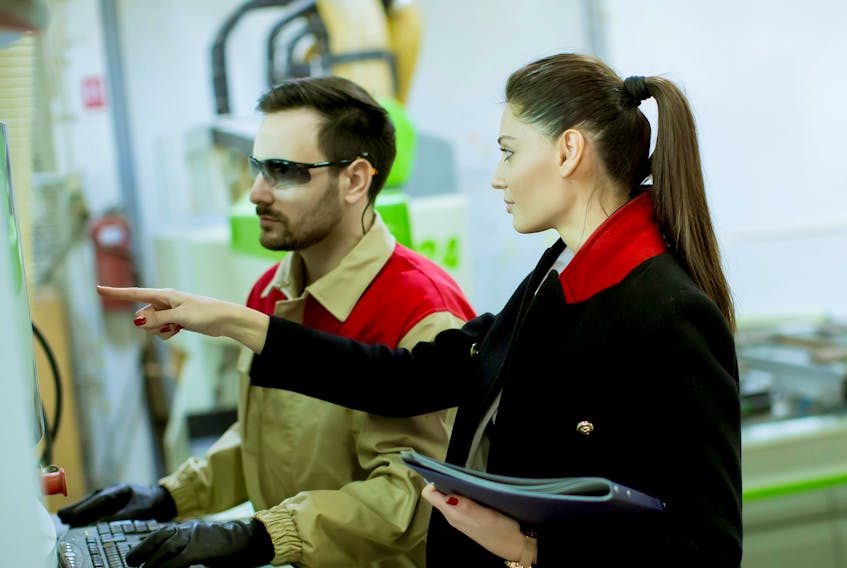Technology advancements continue to drive the need for human beings to learn how to adapt to change. Read most any article on the future of work and it will suggest the work world is changing because of technology advancements.
With the evolution of artificial intelligence (AI) will be the loss of some traditional jobs and the emergence of new ones. Top consulting firms have articles suggesting that there will be more than enough new jobs created by AI to replace all those it displaces.
While this may be true, it assumes that employees who lose their jobs due to AI have the ability and motivation to retool for new opportunities.
This may be why new initiatives are being launched that focus on discovering the specific kinds of job skills the future of work will need, as well as what kinds of curriculum will best prepare employees to retool.
The future of work is suggesting that for organizations to adapt and thrive it’s beneficial if their employees are flexible to accept ongoing change and innovation. This suggests that for an organization’s long-term sustainability there’s a benefit to prepare its workforce for constant change and to encourage and promote innovation to give the organization a competitive advantage.
Innovation can be described as the creative process used to adapt to change and to create new opportunities and possibilities. Innovation happens when employees are empowered, trusted to be creative, feel psychologically safe, and are encouraged to use their imaginations.
Perhaps most important is creating a culture that accepts that human beings are fallible, that there’s no perfection, and making a mistake is nothing more than a mistake — never a judgement of ability, loyalty or character.
Attributes that support employees’ innovation include creativity, problem solving ability, being self-driven, motived to learn, confidence, persistence, patience, humility and emotional intelligence.
Why psychological safety matters for innovation
Timothy Clark, author of the upcoming book The Four Stages of Psychological Safety, suggests that creating a psychologically safe workplace requires all employees to feel included, safe to learn, safe to contribute and safe to challenge the status quo.
A psychologically safe workplace prepares employees and leaders to understand that words and actions affect the employee experience, which has a direct effect on innovation. Cultures where sharing ideas with no fear of being judged, criticized or labelled as being incompetent create conditions for employees to think safely, allowing innovation to flourish.
Human beings are emotional creatures. When we feel stressed, worried and fearful about the consequences for sharing our thinking, this kills innovation. This is why psychological safety is a must for organizations wanting innovation.
One of the hardest things about being human is accepting that we’re not perfect and then giving this same benefit to others. Some judge others’ mistakes harshly but when they make a mistake themselves they expect empathy, support and acceptance.
Each employee’s intrapersonal and interpersonal skills and mental fitness influence how well they support a psychologically safe workplace.
An employer’s commitment to eliminating bullying, harassment and workplace violence, preparing leaders to be psychologically safe leaders, along with senior leadership involvement and employee buy-in to the organization’s values can also influence psychological safety.
Psychological safety for employees is a personal experience and is ultimately defined by each employee based on their interactions with other employees. Most of us have our quirks, style and challenges that can complicate our basic human interactions, leading to frustration in others that likely was not our intention. In cultures that teach employees to give each other the benefit of the doubt, when you experience something different, before judging or reacting get all the facts and use the sage advice of Stephen Covey: first seek to understand.
I’ll share a personal example. All my training and experience doesn’t change the fact that I’m ADHD, and I reveal that to all who work with me. When I’m hyper focused on a point I may make a statement without fully thinking or filtering how it could be received by others.
I recall working with a manager who was clearly a psychologically safe leader. When I had these rare moments of unedited thoughts his response was calm. He wanted to seek to understand. “When you said X, it sounds like you’re suggesting Y. Is that what you’re really trying to say?” This helped me slow down and clarify my thinking. Because he was a psychologically safe leader it allowed me to flourish. Wall Street is competitive and judgemental. My experience could easily have been much different having a leader with a different set of skills.
Every employee makes mistakes. Sometimes they’re due to negligence; other times, just mistakes. Ultimately, how every employee believes mistakes are dealt with in the culture affects their employer’s perceptions around psychological safety for sharing their thinking that influences innovation.









